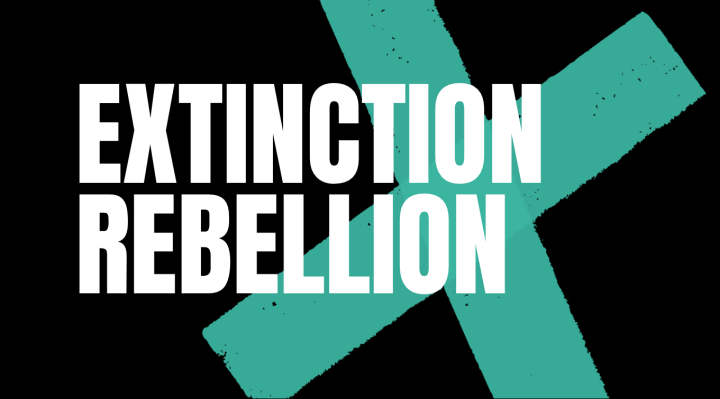Extinction Rebellion
Mass extinction. Catastrophic climate change. Loss of fertile soil, loss of productive land, increase in water stress and scarcity, increase in climate refugees, greater storms, greater floods, greater heatwaves…
Hold on a minute. What does all this mean? Why does this matter? How will it affect me?
What can be done? This is the first in a series of articles that will explore all these problems, and aim to give context to all these issues. This article will explore, what has been described in a normal departure from emotionless language that characterises scientific literature, as a “biological annihilation.”

To start off - What is biodiversity?
Biodiversity refers to the unique variety of life on our blue planet. It underpins our economy and well being, and provides all of us with services that we take for granted - clean air, water, food, materials, medicines, health and recreation. It supports pollination and soil fertility, regulates climate and protects us from extreme weather.
So what is the problem?
We have triggered a mass extinction, one that can wipe all the services that biodiversity gives us. Oh dear...
In spite of the sterling work of conservationists, and piecemeal efforts here and there, wildlife populations have crashed in the last 50 years. On average, they have fallen by 60%, and by the end of this century - so in my lifetime, your lifetime - ⅓ to ½ half of all life stands at risk of extinction.
Also, one has to consider that wildlife populations were not ideal to begin with 50 years ago. Our species is utterly remarkable - highly intelligent, highly adaptable, but also ecologically ruthless. As we went from an insignificant ape to ruler of the world, we terraformed the planet to suit our needs. As our species migrated out of Africa, we set off extinction waves. In fact, in a story that unfortunately repeats itself whenever human remains first appear - large mammals quickly disappear after we appear. Mammoths are the best but not only example. Case in point - the first Homo Sapien first stepped foot on the Australian Continent around 45,000 years ago. Of the twenty four animal species that weighed above 50 kilograms, twenty three went extinct shortly after our arrival.
The agricultural revolution also ushered in a second extinction wave. Now, with the industrial revolution, the wave is turning into a flood.
12,000 years ago there were just around a few million Homo Sapiens on our planet. Now, there are close to 7.7 billion of us. As our population has grown, so too has our consumption. On one hand, living standards have never been higher for so many of us, and a significant number of us live like European monarchs. But is our current lifestyle sustainable?
We all need space - space to grow our food, for schools, hospitals, services. But all land was once natural, and more land for us, means less land for anything else. And our planet has finite space, finite resources. Overpopulation and over-consumption are not alone of course. They are compounded by pesticide use, fertilisers causing eutrophication, pollution of rivers, plastic pollution and increasingly, climate change and ocean acidification.
Heatwaves, extreme weather do not only affect us - last summer in Australia, over the course of 2 days during an extreme heatwave, in which temperature records were baked through, 23,000 spectacled flying foxes died from heatstroke. This is a third of the total population of the species. This is happening in a climate that has changed by 1 degree from the pre-industrial era. By the end of this century, based on current policies, we are looking at anywhere between 3-5 degrees of change by the end of this century. Change will be rapid, and those that cannot adapt, cannot migrate, will go extinct too.
So what can I do?
Here is a 5 point plan, that just might make a difference.
-
Become informed, read up on environmental issues, and join a local conservation group in your area.
-
Find out what local politicians are up to. Are they supporting a transition to renewable energy, green infrastructure, lobbying for rewilding of land, promising to conserve and expand protected areas where biodiversity can flourish? If not, why? If not, then perhaps vote for politicians who recognise this crisis and will act. Or if you have never voted before, vote this time.
-
Examine your habits - the problem is complicated, but one can trim off the edges easily - whether its a reusable cup, packaging free soaps, cutting out food waste, going flexitarian then vegetarian or vegan. All will make a considerable difference in one’s carbon footprint. Using public transport, delaying purchasing a car, or buying an electric one, catching trains instead of flying, can also make a big difference.
-
Invest in renewables - solar, wind, geothermal. We have the technology that can prevent climate change available to us, and the costs of these energy sources continues to decline.
-
But ok, what if I just can’t avoid that flight, or cut down on driving? If you simply can’t make every change that’s needed, then consider offsetting your emissions with a trusted green project.
It’s ok - our lives are busy, and slowing or stopping may not be an option for all. But this is another resource in your toolbox to compensate that unavoidable flight or car trip. The UN Climate Convention keeps a portfolio of dozens of projects around the world you can contribute to. To find out how many emissions you need to ‘buy’ back, you can use its handy carbon footprint calculator.
To conclude, the loss of biodiversity is not just about losing wonders of nature. We are actively destabilising, and risk collapsing the planet’s ecosystems - the bedrock of all life, our life too, on our blue planet.